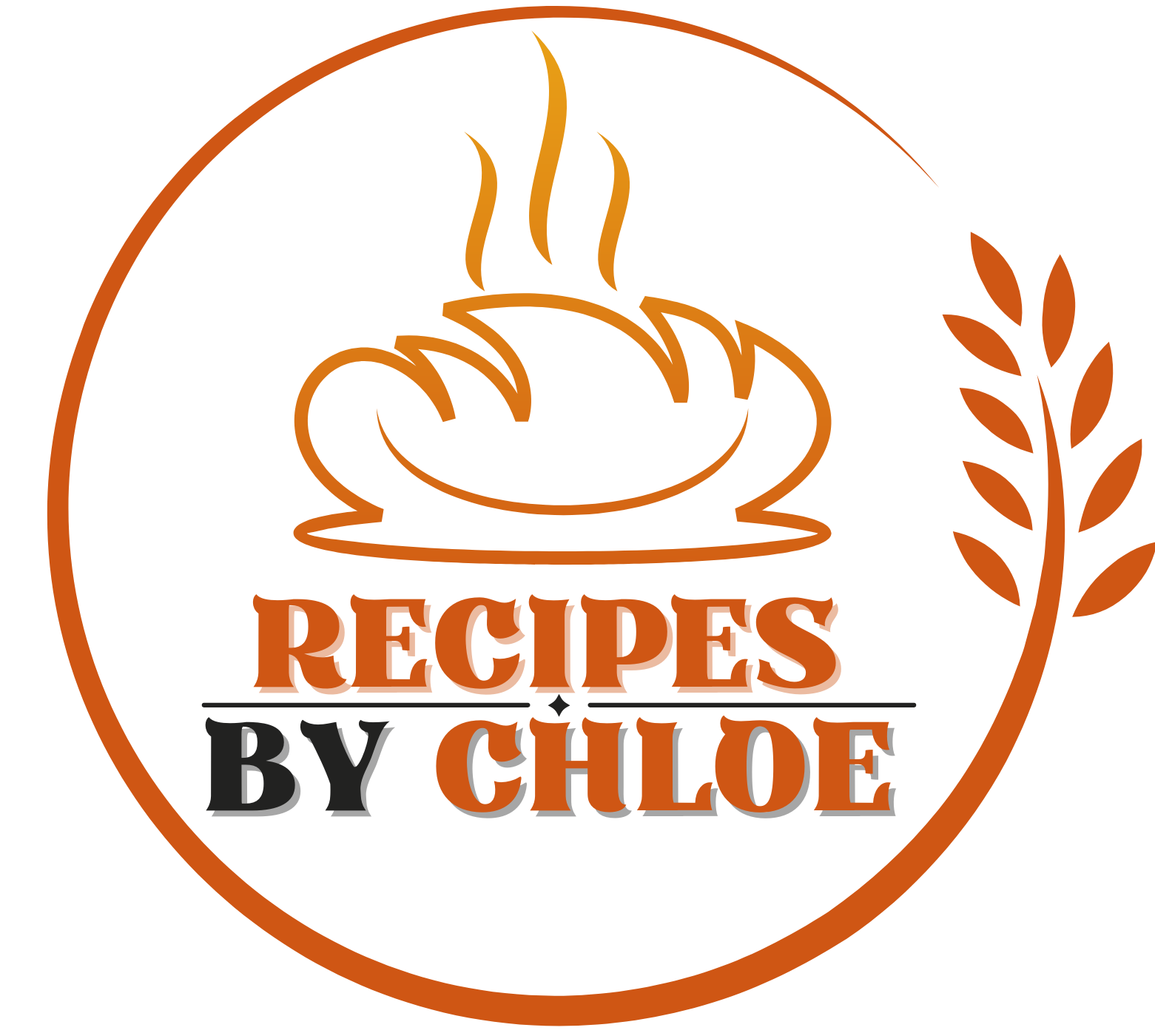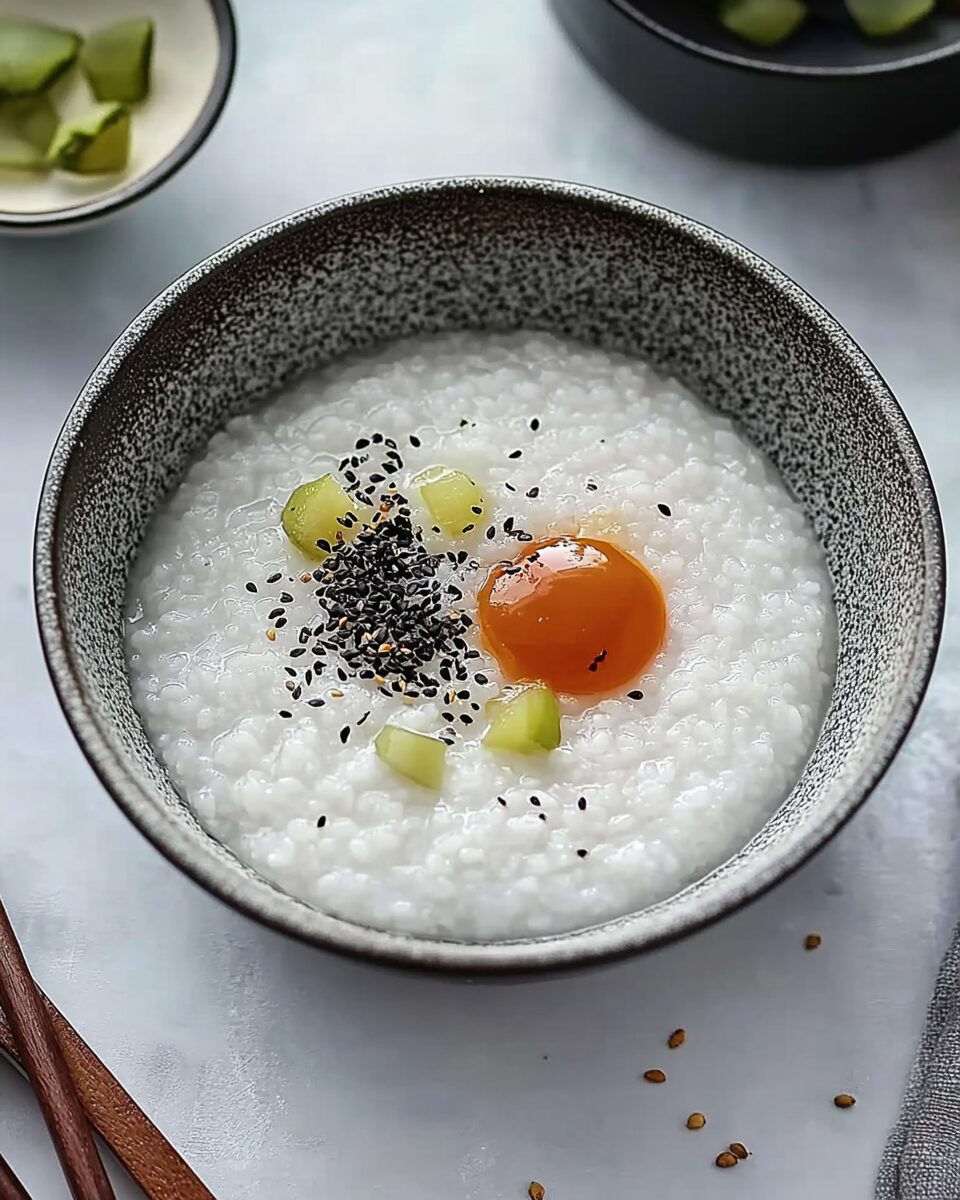Okayu, or Japanese rice porridge, is a comforting dish made simply of rice and water. It is easy to digest, so people in Japan commonly eat it when they have a cold, recover from an illness, or don’t have much appetite. It is also a popular baby food and served to the elderly. You may also find it on hotel breakfast buffet tables.
Full Recipe:
Ingredients
- 1/2 cup Japanese-style rice (short-grain rice)
- 3 cups water
- 1/2 teaspoon salt
- Chopped scallion, for optional garnish
- 1 ounce sesame seeds, for optional garnish
- Umeboshi (pickled plum), for optional garnish
Directions
- Gather the ingredients.
- Wash the rice and drain well. Put 3 cups of water and the rice in a heavy-bottomed pot or earthenware pot. Let sit for about 30 minutes.
- Cover the pot, put over medium-high heat, and bring to a boil. Turn the heat down to low and cook the rice for about 30 minutes, until the rice becomes soft and the porridge reaches your desired consistency.
- Add salt and stir gently.
- Serve hot, garnished with chopped scallion, sesame seeds, or umeboshi, if desired.
Nutritional Facts (per serving)
- Calories: 179 kcal
- Carbohydrates: 40 g
- Protein: 3 g
- Fat: 1 g
- Saturated Fat: 1 g
- Sodium: 3 mg
- Potassium: 38 mg
- Fiber: 1 g
- Calcium: 37 mg
- Iron: 2 mg
The Significance of Okayu in Japanese Culture
Okayu holds a special place in Japanese food culture, often associated with recovery and nourishment. It is commonly eaten when someone is feeling unwell, offering a soothing and easily digestible option for those with low appetite or digestive concerns. In Japan, it is often seen as a comfort food, something that provides warmth and ease during times of illness or stress. The simplicity of its ingredients and preparation makes it an ideal food for when the body and mind need a break from more complex meals.
In addition to being a go-to dish for the sick, okayu is also a common choice for new mothers or elderly people who may have a weakened appetite. The rice porridge is soft, mild, and easy on the stomach, making it a suitable option for those who are recovering from an illness or surgery. In Japanese culture, okayu is not just seen as food but as a nurturing dish, promoting healing and a sense of well-being.
Different Varieties of Okayu
While the basic recipe for okayu remains relatively simple, there are various regional and family-specific variations that make the dish unique. The basic concept of cooking rice with more water than usual to create a porridge-like consistency can be customized in numerous ways. In Japan, okayu can be served with various toppings, seasonings, and side dishes to suit personal preferences.
Some popular additions to okayu include pickled plums (umeboshi), which provide a salty contrast to the mild porridge. Other toppings might include sesame seeds, scallions, or nori (dried seaweed), each adding texture and flavor to the dish. In some regions of Japan, okayu is made with fish, such as salmon, or other proteins like chicken, which can be simmered into the porridge for extra nutrition.
The texture of okayu can also vary depending on personal preference. Some people prefer a thinner consistency, with the rice barely visible in the porridge, while others enjoy a thicker, more substantial version where the rice grains retain more shape. This flexibility allows for a range of options, from light, delicate meals to hearty, filling ones.
Okayu in Modern Cuisine
Although okayu is rooted in tradition, its popularity has not waned, and it continues to be enjoyed by people of all ages. In modern times, okayu is not just limited to being a dish for the sick or elderly. Many people now enjoy it as a quick and easy breakfast or light meal. In urban areas of Japan, it is common to see okayu served at breakfast buffets in hotels, often with a variety of pickled vegetables, fish, and other toppings on the side.
The rise of health-conscious eating has also contributed to the continued popularity of okayu. As a simple, low-calorie, and nutritious dish, it fits into many modern dietary preferences. It can be enjoyed as part of a balanced meal or as a standalone dish for those looking for something light and easy to digest. Its gluten-free nature also makes it an appealing choice for people with dietary restrictions or sensitivities.
In addition to its popularity in Japan, okayu has gained recognition outside of Japan as well. With the increasing interest in Japanese cuisine worldwide, okayu has found its way onto international menus and in cooking blogs, offering people across the globe a taste of traditional Japanese comfort food.
Health Benefits of Okayu
Okayu offers several health benefits, particularly due to its easily digestible nature. This makes it an ideal food for individuals with sensitive stomachs, including children, the elderly, and those recovering from illness. The soft texture of the porridge is gentle on the digestive system, and it is less likely to cause irritation than heavier, more complex meals.
One of the key health benefits of okayu is its ability to provide hydration. The high water content in the dish helps to keep the body hydrated, especially when one is feeling unwell. This is particularly beneficial for those who are sick with a fever or flu, as they may have reduced appetite and risk dehydration.
Additionally, rice is a good source of carbohydrates, which provide energy for the body. Carbohydrates are essential for fueling the body’s daily functions, and the easily absorbed form of rice makes okayu a quick and efficient source of energy.
The dish can also be easily adapted for a variety of dietary needs. It can be made vegetarian or vegan by omitting animal-based toppings or seasonings, and it can be tailored to specific tastes with different flavorings, such as soy sauce, miso, or vegetable broths.
Okayu also offers some essential minerals and vitamins. Depending on the toppings chosen, it can provide a source of potassium, calcium, and iron, which are important for maintaining overall health. Additionally, if umeboshi is used as a topping, it provides beneficial probiotics, which support gut health.
How to Incorporate Okayu into Your Diet
Okayu can be enjoyed as part of a balanced diet in various ways. It can be eaten as a warm breakfast, providing a gentle and comforting start to the day. You can top it with chopped vegetables, pickled plums, or even a soft-boiled egg to add some variety and nutrition. For lunch or dinner, it can be paired with light protein sources like grilled fish, tofu, or vegetables, turning it into a complete meal.
Because of its mild flavor, okayu also serves as a versatile base for different types of seasonings and condiments. You can make it savory by adding soy sauce, miso paste, or pickled vegetables. For a sweeter version, honey, fruit, or even a little bit of cinnamon can be added for a comforting dessert option.
In some households, okayu is made more hearty by simmering it with vegetables like carrots, onions, or daikon radish, and it can even be made into a more substantial meal with the addition of meat or tofu. For a quick and satisfying meal, you can make okayu in large batches and store it in the refrigerator to be reheated as needed.
Conclusion
Okayu is more than just a simple rice porridge. It is a dish deeply embedded in Japanese culture and history, offering comfort, nourishment, and healing. Whether enjoyed as a remedy for illness or as a quick meal, okayu remains a beloved and versatile dish. Its simple yet delicious nature has stood the test of time, adapting to modern tastes while retaining its traditional charm.






